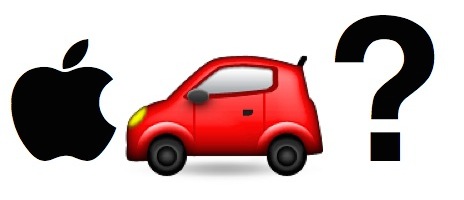| Apple, Google, and the Future of the Car Industry Page 2 |

More interesting is Google's tie-up with Audi, GM, Honda and Hyundai in the Open Automotive Alliance (OAA)to develop a
common platform for Android apps on their cars. It was something that Helen Falks was working on at Saab until the
company filed for bankruptcy in 2011.
"We were planning a similar system, using Android as a platform," says Falks, who is now Senior Project Manager at
Nordiska Interaktionsbyrn, a leading interaction design agency in the Scandinavian car industry. "We were talking about a
two-sided market where you have to give the developers the possibility to have some business benefits with a large
customer base and the customers are looking for good content, rather than the proprietary market that the car industry has
used. We were looking to lower the threshold of entry for developers to open up a standard API (Application Programming
Interface) so data could be accessed to create the open space.
"There were several research projects we were discussing with Google, as you need somebody with the size of Google to
push the industry into this open space, but they said they will go into the car industry once they have done tablets and TV.
"Now they have formed OAA and brought in several car manufacturers as they always said they were looking for more
volume. It will be very interesting to see how OAA develops and whether they can standardise an open platform across
several car manufacturers, because there is a lot of traditional thinking in the automotive industry. We are seeing semi-open
platforms for infotainment in cars, but we were looking at the engine management system and other digital systems in the
car. After all, there are 500 vehicle signals which are pretty similar in all cars. They have different protocols and different
systems of language, but if it was standardised you would have much a larger volume to create new apps. But this will take
time for the car industry. It took 15 years to introduce ABS brakes in large scale, so that gives you an idea of how slowly
the car industry moves."
Falks reveals a project she worked on with Saab and the Swedish road authority which gives some idea of the potential
value of connecting all makes of cars across a digital platform.
"Icy roads are a big issue in Sweden, so we wanted to develop an app where you would know exactly where and when a
road was slippery and even in what direction cars were sliding," says Falks. "That information is available in cars today.
These cars would relay instantly to the authority which road was slippery and how slippery so that they could pinpoint their
efforts, because it is very expensive to keep roads safe in the winter and salt is bad for the environment."
That was with just 50 Saabs, but imagine if all cars were relaying this information to the Highways Agency and to drivers as
well in real time, it would surely help make roads safer. Falks' only problem was the business model as it produced cost
savings for the road authority but little value for the car manufacturer.
But Henfridsson argues that is one of the points of opening up access to cars' data-third-party developers will work out
business models and apps we can't even dream of, as happened with smartphones. As Falks says "You can try to guess
what apps would be invented, but you will probably be wrong."
And these developers will be focused on the drivers and the user experience more so than car manufacturers, who have
been tinkering with suspensions for decades.
"In the past if you wanted to be successful in the car industry you needed a huge amount of investment," says Henfridsson.
"The car industry has been so focused on scale, that it is only a few companies who own those resources who have been
controlling what has been going into the car. Now, we will see the birth of customer-driven DIY developments in the car.
An app store for cars, that is what is coming, everybody can design an app for a car.
"Instead of one navigation system you might have 10, or some navigation aid nobody has thought about before and you
might be able to sell advertising through this app. Plus opening up to the crowd addresses some of the customisation issues
car manufacturers make for local markets. Traditionally they want to minimise them because it drives up cost, but this turns
it around, as a small app developer in each country can do those adaptations and it won't cost the car manufacturer a penny.
"Also, normally in the car industry you need a four or six-year cycle in car development to get your investment back, but
this will change. Software can be reproduced at a minimal cost, at the point when you share with the Android community.
(Click here for Page 3)